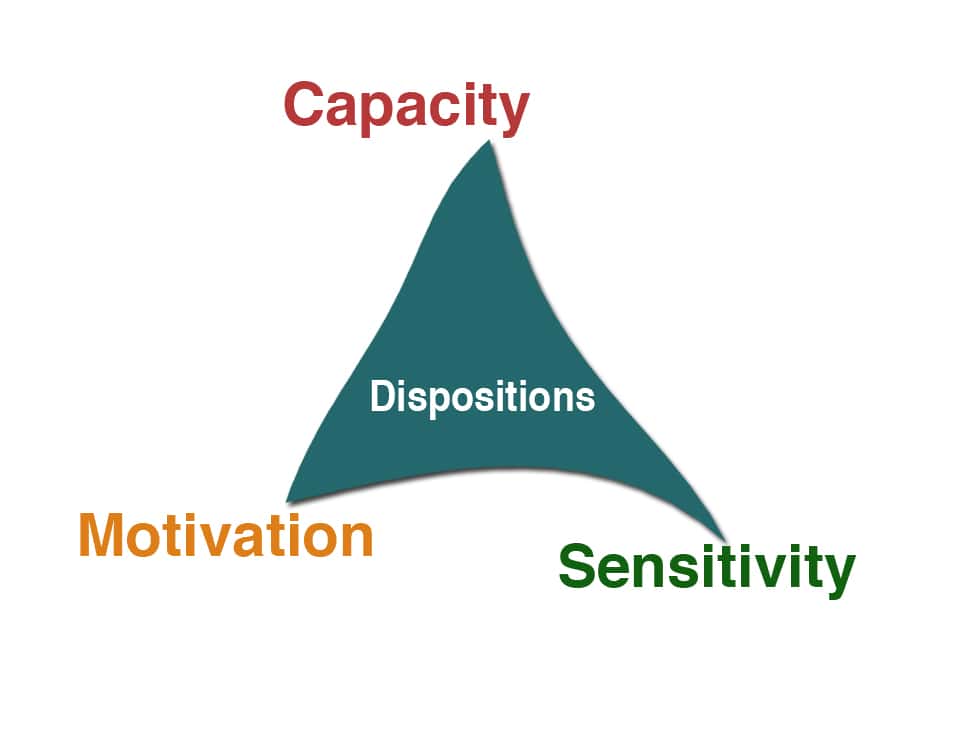Introduction to Child Dispositions
Welcome to our in-depth guide where we delve into the colorful world of child dispositions! If you’re a parent, caregiver, or educator, understanding the unique temperament and disposition of the children in your care isn’t just fascinating – it’s essential. Recognizing and nurturing these innate personality traits can lead to happier, more fulfilling experiences for both you and your little ones. So, without further ado, let’s explore the tapestry of traits that make up your child’s disposition.
What is Disposition?
Before we can nurture it, we must define it! Disposition refers to a person’s inherent qualities of mind and character. In simpler terms, it’s the natural tendency or tendency in the way a child interacts with their environment and the people in it. Unlike behaviors which can be learned and unlearned, dispositions are wired into a child’s being, influencing how they perceive and respond to the world from a very young age. So, let’s get you equipped to identify and encourage these traits!
Why Knowing Your Child’s Disposition Matters
- Improves Parent-Child Relationships: Understanding your child’s disposition can significantly enhance your connection. By recognizing how they naturally react to situations, you can tailor your parenting style to fit their needs.
- Better Emotional Support: Knowing your child’s emotional tendencies helps you provide the right kind of support, making them feel loved and understood.
- Guides Effective Discipline: When discipline aligns with a child’s disposition, it’s more effective and respectful, promoting positive behavior changes.
- Supports Social and Emotional Development: By acknowledging and valuing your child’s unique traits, you help them develop a strong sense of self and better social skills.
Identifying Your Child’s Disposition
Now let’s talk about spotting those dispositions! They often present themselves through consistent patterns in your child’s behavior. For example:
- How does your child react to new situations – with enthusiasm or caution?
- What’s their energy level like throughout the day – are they constantly on the move or more reserved?
- Do they adapt to changes smoothly or do they need more time to get comfortable?
Observing these behaviors can give you valuable insights into their personality. Let’s look at common dispositions you might encounter.
Common Child Dispositions
Children come in all sorts of dispositions. Some might be:
- The Explorer: Curious and active, always seeking new adventures.
- The Thinker: Analytical and introspective, preferring to observe before jumping in.
- The Social Butterfly: Outgoing and communicative, always looking to engage with others.
- The Harmonizer: Peaceful and accommodating, often putting others’ needs before their own.
Nurturing Each Disposition Type
Now that you’ve got a glimpse of the various dispositions, let’s talk nurturing. Here’s a teaser of what we’ll cover:
- The Explorer: Provide plenty of opportunities for safe exploration and active play. Feed their insatiable curiosity with diverse experiences.
- The Thinker: Engage their thought processes with puzzles, books, and contemplative activities. They thrive in environments where they can take their time.
- The Social Butterfly: Encourage social interactions through group activities and playdates. They flourish with communication and collaboration.
- The Harmonizer: Foster their cooperative spirit with team-based activities and discussions about feelings and empathy. Recognizing their peacemaking abilities can build confidence.
Understanding and nurturing these dispositions can be a beautiful journey of bonding and discovery. It encourages your children to flourish in their natural state, promoting a happy, well-adjusted development. Stay tuned as we dive deeper into each disposition, offering tailored advice and activities to support your unique little individual.
Remember, every child is a kaleidoscope of personality traits, and recognizing the patterns within can make your parenting experience a more colorful and rewarding one. Whether you’re nurturing an explorer or a social butterfly, you’ll find practical tips and heartfelt advice in this comprehensive guide. So, let’s keep exploring together and celebrate the individual spirit of each child we’re lucky enough to guide through life.

5 Things Parents Should Know in Preparing for Dispositions
- Expect a Wide Range of Emotions: Kids may display a vast array of emotions as part of their disposition. Whether it’s joy, frustration, or curiosity, it’s important to validate these feelings and guide them through understanding and managing their emotional responses.
- Each Child is Unique: No two children are the same, even within the same family. One child’s disposition may be entirely different from their sibling’s, so avoid comparisons and embrace each child’s individuality.
- Environment Plays a Role: Though dispositions are inherent, the environments we provide for our children can enhance or stifle these natural tendencies. Create spaces that allow them to express and grow into their dispositions comfortably and safely.
- Patience is Key: Understanding and adapting to your child’s disposition isn’t an overnight process. It can take time to see patterns and learn the best ways to respond. Patience will be your best tool in discovering the nuances of your child’s personality.
- Encouragement and Support: Always encourage your kids to be true to themselves. Supporting their natural predispositions will boost their confidence and support them in developing a secure sense of identity.
Nurturing Dispositions with Age-Appropriate Activities
We’ll delve into specific strategies for fostering your child’s disposition with examples of age-appropriate activities, strategies for promoting positivity and resilience, and tips for dealing with challenges that arise.
Dealing with Mismatched Dispositions within the Family
It’s not uncommon for parents to have a different disposition from their children, which can sometimes lead to misunderstandings. We will provide insight into bridging these gaps and finding common ground.
The Role of Genetics and Environment
There’s a fascinating interplay between nature and nurture when it comes to child dispositions. This portion of the guide will enlighten parents on how genetics and environmental factors converge to shape your child’s disposition.
Adapting Parenting Styles to Fit Dispositions
Finally, we’ll tackle how to adjust your parenting approaches to meet the needs of your child’s disposition. This is vital for fostering a balanced and nurturing home life that promotes positive growth and well-being.
Understanding your child’s disposition is an ongoing and dynamic journey. As they grow and their lives evolve, so too might nuances of their disposition. As a parent, keeping up with these changes and continuing to provide the appropriate support is one of the greatest gifts you can give. Remember to celebrate every step of this journey, as each moment contributes to the beautiful tapestry that is your child’s personality.
See more great Things to Do with Kids in New Zealand here. For more information see here
Disclaimer
The articles available via our website provide general information only and we strongly urge readers to exercise caution and conduct their own thorough research and fact-checking. The information presented should not be taken as absolute truth, and, to the maximum extent permitted by law, we will not be held liable for any inaccuracies or errors in the content. It is essential for individuals to independently verify and validate the information before making any decisions or taking any actions based on the articles.




